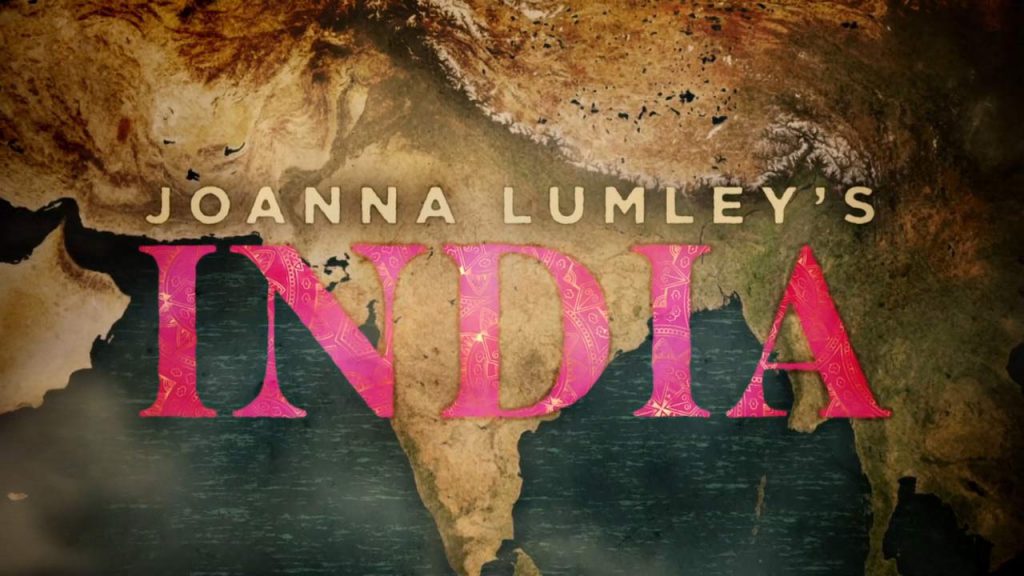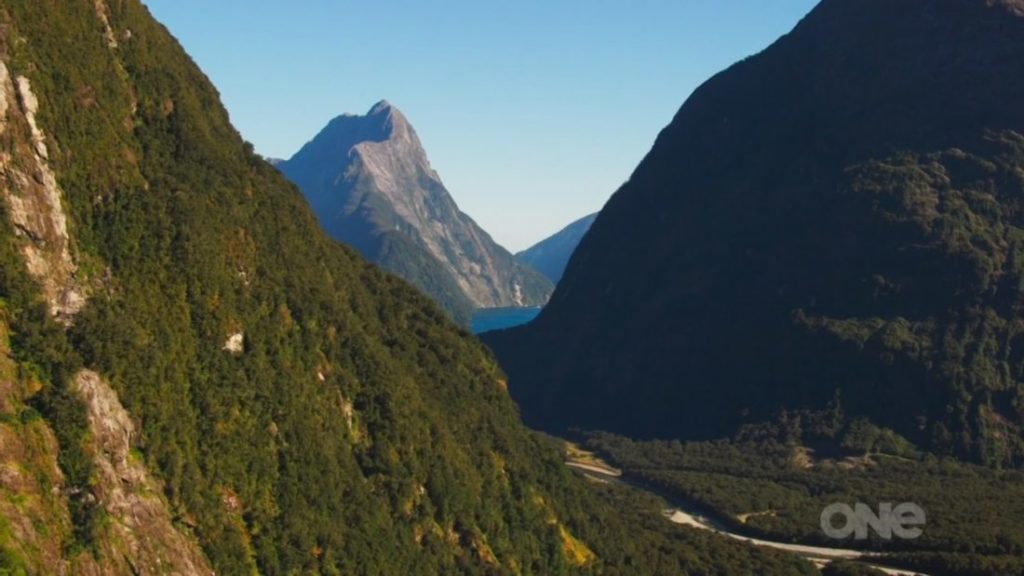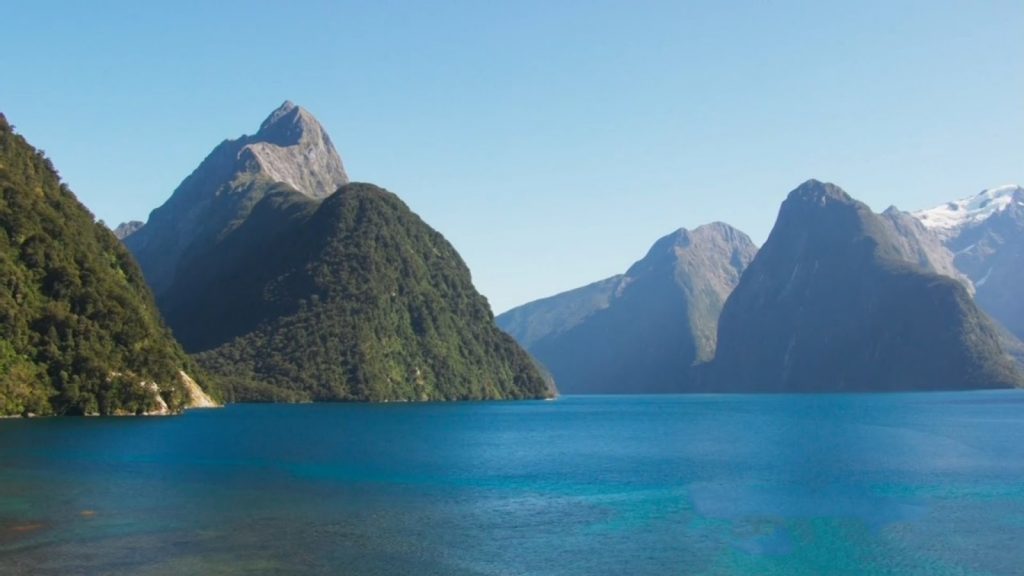Joanna Lumley’s India episode 2: Joanna meets the Maharaja of Dungarpur, who shows her around his lakeside palace. In stark contrast, Joanna visits a Dalit community – considered to be India’s lowest caste – in Gujarat, and hears of the everyday discrimination these people experience under India’s still deeply entrenched 3,000-year-old caste system. She later joins in a Hindu house warming ceremony, where a cow and calf are brought into the new house for luck. Braving the roads of Mumbai, Joanna takes a ride in the city’s only all-female taxi company and visits the Times of India, where her uncle was editor of the paper in the 1930s and 40s. She then overcomes her vertigo to explore the World One Tower, soon to be Mumbai’s tallest luxury residential building.
Joanna Lumley travels back to the country of her birth. A year older than independent India itself, Joanna was born in Srinagar in the last days of the Raj and India was home to both sides of her family for several generations. Joanna travels the length and breadth of the country, beginning her epic journey in Tamil Nadu – on the southern tip of the subcontinent – and works her way up to the north. She travels over 5,000 miles, exploring its diverse landscapes, different cultural traditions, and extraordinary spirit.
Joanna Lumley’s India episode 2
Joanna Lumley’s India is a travel series that takes viewers on an unforgettable journey through the diverse and colorful country of India. The British actress and television personality, Joanna Lumley, leads the way as she explores the ancient and rich culture of India, delving into its history, religion, and traditions. Throughout the series, Lumley visits a variety of locations in India, including the bustling cities of Mumbai and Delhi, the stunning Taj Mahal, and the tranquil backwaters of Kerala. Along the way, she meets with local people and experiences their unique ways of life.
One of the highlights of the series is Lumley’s visit to the city of Jaipur, where she discovers the rich history and grandeur of India’s past rulers. She marvels at the stunning architecture of the Hawa Mahal, the Palace of Winds, and the Amber Fort, taking in the breathtaking views from their ramparts. Another highlight of the series is Lumley’s visit to the city of Varanasi, one of the holiest cities in India and a major center of Hinduism. She joins the pilgrims on the Ghats of the River Ganges, experiencing the spiritual rituals and customs that have been performed for thousands of years.
Lumley also delves into India’s rich culinary tradition, trying delicious local dishes and visiting traditional markets and street food stalls. She even visits a local spice plantation in the state of Kerala, where she learns about the history of India’s famous spices and the role they have played in the country’s rich culinary heritage. Throughout Joanna Lumley’s India, Lumley captures the essence of India, showcasing its beauty, its people, and its rich history and traditions. With her lively and engaging personality, Lumley takes viewers on a journey they will never forget, providing a unique insight into one of the world’s most fascinating countries.
Joanna Lumley’s India is a must-watch for anyone who loves travel, history, and cultural experiences. With its stunning cinematography, captivating storytelling, and Joanna Lumley’s engaging presence, this series offers a window into India that is not to be missed.
India
India is a land of vibrant cultures, rich history and stunning landscapes. From the bustling streets of Mumbai to the serene beauty of the Himalayas, the country offers a diverse array of experiences for travelers. As you venture further into India, the rich cultural heritage becomes apparent. The country boasts a history dating back thousands of years and is home to ancient monuments such as the Taj Mahal, which stands as a testament to the country’s rich history and stunning architecture.
India is also known for its rich and diverse cuisine, which varies greatly from region to region. From the spicy dishes of the north to the seafood specialties of the coastal areas, there is no shortage of delicious food to be found in India. For those looking for a spiritual journey, India is the perfect destination. The country is home to numerous holy sites, including the famous Ganges River and the ancient city of Varanasi. It is also home to the largest population of Hindus in the world, and Hinduism plays a significant role in the country’s cultural and spiritual heritage.
In addition to its rich cultural heritage, India is also home to stunning natural landscapes. The Himalayan mountain range offers breathtaking views, while the lush jungles of the north are home to a diverse array of wildlife. For adventure seekers, India offers opportunities for trekking, rafting, and wildlife viewing. Furthermore, India is a country on the rise, with a rapidly growing economy and a bustling tech industry. In cities like Bangalore and Hyderabad, one can see the incredible progress that is being made, and the country is poised for even more growth in the future.
India is a country full of contrasts and diversity, with something to offer everyone. From its rich cultural heritage to its stunning landscapes, India is a must-visit destination for anyone looking to experience a unique and exciting part of the world.
Untouchables – Joanna Lumley’s India episode 2
The Dalit community, also known as “untouchables,” are a historically marginalized group in India. Despite the abolishment of caste-based discrimination in law, the social effects of the caste system continue to impact the Dalits today.
Firstly, the caste system, a social hierarchy that classifies individuals based on their birth and occupation, has long oppressed the Dalits. They were considered the lowest in the hierarchy and were subject to extreme forms of discrimination, including denial of access to education and employment opportunities, as well as physical and verbal abuse. However, despite the challenges faced by the Dalits, there has been progress in recent years towards greater equality and empowerment. For instance, affirmative action policies, such as quotas in education and government jobs, have aimed to address the historical disadvantage faced by Dalits.
Additionally, various organizations and movements have emerged to empower and give voice to the Dalit community. For instance, the Bahujan Samaj Party, which focuses on Dalit rights and empowerment, has gained significant political influence in some regions of India. Despite these efforts, however, discrimination and prejudice towards Dalits remain prevalent in many parts of India. Moreover, the implementation of affirmative action policies and the success of Dalit empowerment movements have faced significant resistance and pushback.
Moving forward, it is important to continue the work towards achieving a more equitable and just society, where the rights and dignity of all individuals, regardless of their caste, are respected and upheld. This can be achieved through education and awareness campaigns, as well as the continued development and implementation of policies aimed at addressing caste-based discrimination.




